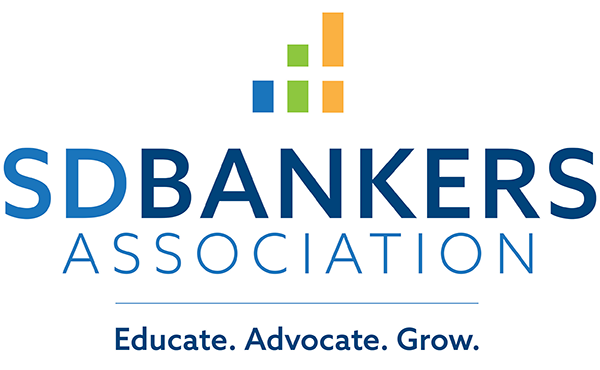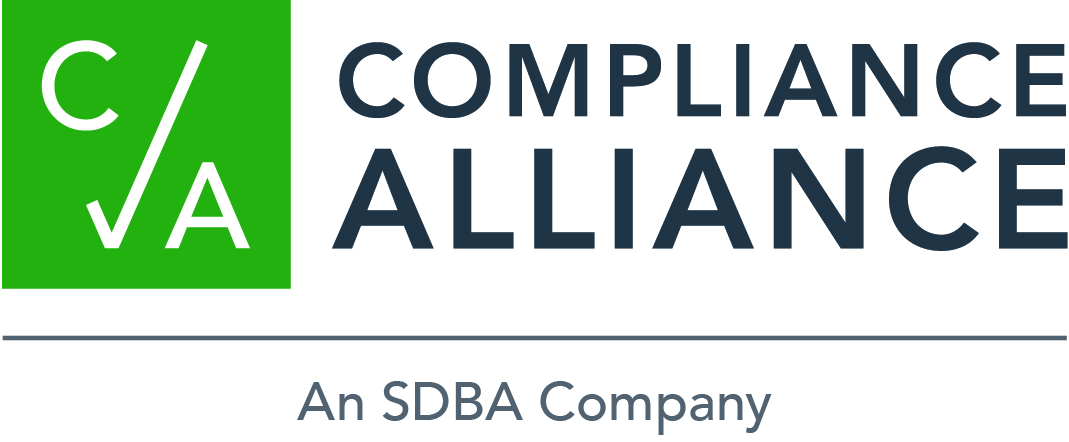- Education & Events
- Advocacy
- Products & Services
- Membership
- Resources
- SDBANKER Magazine
- SDBA eNews
- SDBA eNews Archives
- Legislative Update/Bill Watch
- South Dakota Bank Directory
- Women in Banking
- Scenes of South Dakota Calendar*
- Holiday Signs
- Regulatory Report
- South Dakota Banking Code
- Record Retention Manual
- Advertising & Sponsorship Guide
- COVID-19 Resources
- Mental Health and Crisis Prevention
- About
|
Banking Agencies Issue ABA-Urged Guidance on Hemp BankingThe federal banking agencies and the Financial Crimes Enforcement Network, in consultation with the Conference of State Bank Supervisors, on Tuesday issued guidance long sought by ABA on banks’ Bank Secrecy Act obligations related to hemp producers. The guidance makes clear that banks are not required to file Suspicious Activity Reports on hemp producers operating under an approved federal, state or tribal license or plan. The guidance also notes that bank customers are responsible for complying with regulatory requirements, not the banks. “Because hemp is no longer a Schedule I controlled substance under the Controlled Substances Act, banks are not required to file a [SAR] on customers solely because they are engaged in the growth or cultivation of hemp in accordance with applicable laws and regulations,” the agencies said. “For hemp-related customers, banks are expected to follow standard SAR procedures, and file a SAR if indicia of suspicious activity warrants.” The guidance came following an interim final rule in October from the U.S. Department of Agriculture, which provided a framework for how USDA will approve regulatory plans from states and Indian tribes that wish to oversee hemp production, as well as a federal plan to license producers in areas without approved local plans. FinCEN said it will issue further guidance after reviewing the USDA rule. While the 2018 Farm Bill reclassified hemp as a legal agricultural commodity, significant questions remained, and ABA encouraged regulators to provide additional clarity on banks’ ability to serve hemp producers and hemp-related businesses. “We appreciate the steps regulators have taken today to clarify regulatory expectations for banks, and we look forward to working with them as they develop additional guidance,” said ABA President and CEO Rob Nichols. Read the guidance. For more information, contact ABA’s Ed Elfmann or Rob Rowe Agencies Outline Risks and Benefits of Alternative Data UseFive federal banking agencies on Tuesday issued a joint statement on the use of alternative data in credit underwriting. In the statement, the Fed, CFPB, FDIC, NCUA and OCC noted that use of alternative data—such as cash flow data—may improve the speed and accuracy of credit decisions and increase access to credit for some consumers. The agencies warned, however, that as with other credit underwriting innovations, a thorough analysis of relevant consumer protection laws will be necessary. “Many factors associated with the use of alternative data, including those discussed for cash flow data, may increase or decrease consumer protection risks,” the agencies wrote. “Robust compliance management includes appropriate testing, monitoring and controls to ensure consumer protection risks are understood and addressed.” ABA has long held that when used responsibly, alternative data has the potential to improve underwriting, reduce losses, lower the cost of credit and open the door to mainstream credit to individuals that may not have established credit histories. The association published a white paper earlier this year on the benefits of alternative credit analytics as a supplement to its fintech playbook. Read the statement. Download the white paper.
WSJ Article Examines Mission Creep, Rising Risk Among Credit UnionsTax-exempt credit unions—which have seen significant growth in the years since the financial crisis—are increasingly “using their newfound financial heft to compete aggressively for business” against taxpaying banks, according to a Wall Street Journal article on Monday. As many larger credit unions have grown in scale, they have engaged in higher-risk forms of lending while loosening the common bond requirements and even purchasing taxpaying banks, the article noted. “They are making lots of loans with high-risk features,” said Federal Financial Analytics’ Karen Shaw Petrou, who was interviewed for the story and who previously conducted an ABA-commissioned study of the credit union industry that found that credit unions have fallen short of their statutory mission to serve customers of small means. For example, credit unions have become particularly involved in auto lending in recent years—now accounting for nearly one-third of outstanding auto loans in the U.S.—and WSJ noted that a large share of these loans are for terms of six years or more, an indication that consumers may end up owing more than the vehicle is worth. In addition to taking on more risk, WSJ pointed out that the National Credit Union Administration has repeatedly delayed a critical post-crisis rulemaking to set more stringent capital requirements for credit unions. The article noted that “economists and analysts are uneasy about how these bulked-up credit unions will fare in a recession. In another financial crisis, some could fail or shrink, stranding borrowers who prefer not to use banks. In a worst-case scenario, taxpayers could be saddled with the losses.” Read the article (subscription required). FDIC Seeks Public Feedback on Regulatory ActionsAs part of its ongoing commitment to transparency, the FDIC is issuing a request for information seeking comments on its regulatory actions to assess their effectiveness, cost and benefit. “An objective and transparent analysis of the effects of regulatory actions and alternatives supports both good policy decisions and the meaningful involvement and trust of the public in the rulemaking process,” the FDIC said. Among other things, the FDIC is seeking information on the effects of regulation on banks’ safety and soundness; how it can better anticipate potential unintended consequences of regulatory changes; the effects of regulation on the cost and availability of credit and other financial services; and the direct and indirect costs incurred by banks as a result of regulatory changes. Comments on the RFI are due on Jan. 28, 2020. Read the RFI. CFPB Issues Proposal to Extend Critical Remittance Rule ExceptionThe Consumer Financial Protection Bureau on Tuesday proposed an ABA-advocated change to its remittance rule that would permanently allow depository institutions to estimate certain fees and exchange rates when making disclosures to their customers. Institutions are currently allowed to do so under a temporary provision of the rule, which is set to expire in July 2020. ABA noted in previous comments that extending the temporary provision was vital to ensuring that consumers can continue to have access to remittances. The proposal would also increase the threshold at which institutions are considered to be “remittance transfer providers” from 100 to 500, as ABA also urged in its comment letter. The bureau noted that increasing this safe harbor threshold would reduce the regulatory burden on more than 400 banks that send a relatively small number of remittances each year. Comments on the proposal are due 45 days after publication in the Federal Register. Read the proposal . For more information, contact ABA’s Rob Rowe.
Catholic Social Services Reaches Out to West River Farm/Ranch FamiliesCatholic Social Services has been hearing from pastors, rural families and local businesses that adverse weather conditions and low commodity prices are taking a toll on many local farm and ranch producers. The Diocese of Rapid City’s Disaster Response Committee has authorized the use of funds to offer farm and ranch families a listening ear. "The CDC reports that farm and ranch families have the highest suicide rates among all professions. Too often these families feel as though they are on their own and haven’t had access to affordable or accessible services," said Jim Kinyon, Catholic Social Services executive director. "Historically our rural regions have lacked access to basic services needed to help support them. Producers can become discouraged when weather and economic conditions they have little control over become chronic stressors.” In order to reach out to address these realities, Catholic Social Services has made available free services throughout western South Dakota for producers. These services can be accessed either through CSS’s offices or via tele-therapy. To access tele-therapy call CSS’s office at 605.348.6086. CSS’s only full-time office is in Rapid City, but services are also accessible through satellite offices in Eagle Butte, Spearfish, Pine Ridge or Porcupine. View a flier. In addition, the SDBA has a list of mental health and crisis prevention resources on its website.
Regulatory Feedback Initiative WebinarLearn about the Regulatory Feedback Initiative and how it can help institutions better prepare for examinations in a free webinar hosted by The Coalition of Bankers Associations and FinPro on Tuesday, Dec. 17, at 10 a.m. CST. The webinar will feature survey data collected from hundreds of banks around the country relating to their last bank examination. Webinar participants will hear expert analysis of trends and hot topics in current exams which they can use to prepare their team for their next exam. Participants can also earn 1.0 CPE credit. Learn more. Register for the webinar. New FFIEC Business Continuity Guidance WebinarThe FFIEC released a major update to its Business Continuity Planning booklet, renaming the guidance Business Continuity Management. The updated Business Continuity Management (BCM) booklet is a complete overhaul of the 2015 updated BCP booklet, which added the famous Appendix J to Strengthening the Resilience of Outsourced Technology Services. Appendix J, along with all of the other significant appendices, has now been interwoven into the new November 2019 BCM booklet. The Graduate School of Banking in Wisconsin will hold a webinar on Thursday, Dec. 12, at 2 p.m. CST to overview the updated BCM booklet and its contents. This webinar will provide a good starting point at understanding the new areas of focus and how to navigate the first 49 pages of expectations. The discussion will cover the following major areas: business continuity management, business continuity management governance, risk management, business continuity strategies, business continuity plan, training, exercises and tests, maintenance and improvements, and board reporting. The webinar will be taught by Chad Knutson, co-founder and senior information security consultant for SBS CyberSecurity. The cost for the webinar is $179. Learn more and register.
|



